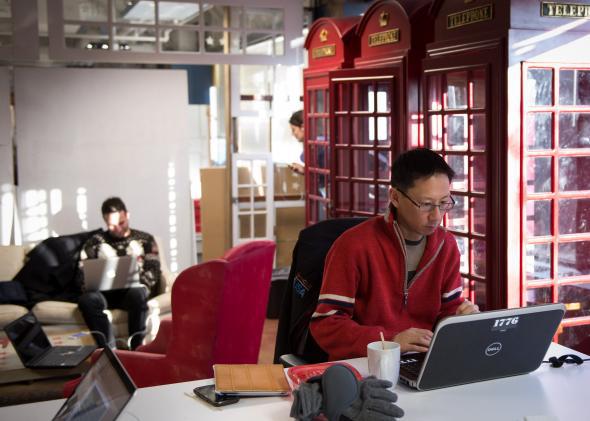Every weekend, Longform shares a collection of great stories from its archive with Slate. For daily picks of new and classic nonfiction, check out Longform or follow @longform on Twitter. Have an iPad? Download Longform’s app to read the latest picks, plus features from dozens of other magazines, including Slate.
The Office of the Future
Businessweek • June 1975
Communication in the office, just before word processor and fax use exploded.
Can desk-top terminals be made “friendly” enough so that executives will use them? Should a lot of powerful machines be moved together with central libraries and thus break up traditional working relationships? Will office systems get needed computer power by depending on the machines already in EDP centers doing accounting and financial work? Says Pake’s boss, Jack E. Goldman, Xerox chief scientist: “I don’t think anyone can really know which is the way to go now.”
Absolute PowerPoint
Ian Parker • The New Yorker • May 2001
The definitive story of a ubiquitous software. PowerPoint’s origins, its evolution, and its mind-boggling impact on corporate culture.
But PowerPoint also has a private, interior influence. It edits ideas. It is, almost surreptitiously, a business manual as well as a business suit, with an opinion—an oddly pedantic, prescriptive opinion—about the way we should think. It helps you make a case, but it also makes its own case: about how to organize information, how much information to organize, how to look at the world. One feature of this is the AutoContent Wizard, which supplies templates—“Managing Organizational Change” or “Communicating Bad News,” say—that are so close to finished presentations you barely need to do more than add your company logo.
The Origins of Office Speak
Emma Green • Atlantic • April 2014
“Productivity,” “synergy,” “personal brand”—a linguistic journey through the workplace.
Over time, different industries have developed their own tribal vocabularies. Some of today’s most popular buzzwords were created by academics who believed that work should satisfy one’s soul; others were coined by consultants who sold the idea that happy workers are effective workers. The Wall Street lingo of the 1980s all comes back to “the bottom line,” while the techie terms of today suggest that humans are creative computers, whose work is measured in “capacity” and “bandwidth.” Corporate jargon may seem meaningless to the extent that it’s best described as “bullshit,” but it actually reveals a lot about how workers think about their lives.
New Trends in Office Design
Nikil Saval • n+1 • April 2014
Standing desks, never-ending hallways, and all-inclusive campuses.
Any workplace fad invites complicated feelings. There are understandable reasons to feel annoyed at having “standing meetings” or watching someone work his calves while muddling through a taco salad. But ultimately the change is right, and there is little to say against it. We should count the new popularity of standing desks as an objective advance in the rectitude of man. “Rousseau,” Kant said, “set me upright.” He would be pleased, we can guess, to enter a workplace and see legions of subjects working on their feet.
Are You Checking Work Email in Bed? At the Dinner Table? On Vacation?
Clive Thompson • Mother Jones • May 2014
The modern office goes beyond the desk.
My airplane home from Boston is delayed for takeoff, so the woman next to me pulls out her phones to get some work done. Like many of us, she has two—an iPhone for her personal life and a BlackBerry paid for by her employer. “It’s a dog leash,” she jokes. “They yank on it and I respond. If somebody from work emails me on Friday at 10 p.m., they’re pissed if I don’t write back in five minutes.” When I ask whether she ever just turns it off, she shakes her head in annoyance, as though I’d uttered something profane. “My team leader would kill me,” she says.
Sinkhole of Bureaucracy
David A. Fahrenthold • Washington Post • March 2014
The story of an office stuck deep in the past.
This is one of the weirdest workplaces in the U.S. government—both for where it is and for what it does.
Here, inside the caverns of an old Pennsylvania limestone mine, there are 600 employees of the Office of Personnel Management. Their task is nothing top-secret. It is to process the retirement papers of the government’s own workers.
But that system has a spectacular flaw. It still must be done entirely by hand, and almost entirely on paper.
Have a favorite piece that we missed? Leave the link in the comments or tweet it to @longform. For more great writing, check out Longform’s complete archive.
